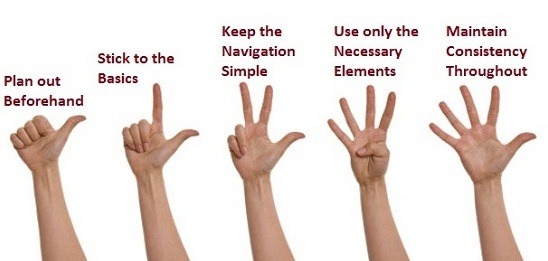Whilst many on the outside will look at web development and design as being one and the same, they really are from two different worlds when it comes down to it. Developers, for one thing, want a website to work right, whilst designers only care about it looking right. This, of course, leads to a number of pet peeves that both sides have with each other – but they can be avoided:
1. “Why can’t the developer make it look like the template?”
Often, when a designer has created a website and handed the template to the web development team, it will come back looking like a patchwork quilt of what they once created. The issue here is that templates are not web pages – the programs used to create them allow designers to do a whole lot of things that simply are not possible.
How to avoid: designers should be in constant contact with the web development team, from the time they begin the creation to the time that they finish. This way, the developers can say whether something is easy to accomplish or not and whether an alternative exists.
2.“The colours aren’t what I chose!”
A designer may have spent hours choosing out the exact shade of blue or pink that they wanted for a website – then the web development team comes in and decides that a colour that is close is close enough. The issue here is that there are a number of shades available for each colour and it shouldn’t be too hard to get them right.
How to avoid: designers should spell out all of the colour values on a particular page; you cannot always rely on web developers having enough time (or the thought) to sample the colours in Photoshop to find out what they are.
3. “Don’t developers know what ‘white space’ means?”
A designer will often leave plenty of empty space around the elements on a web page, as this improves readability for users. Once the web development team gets their hands on it, however, all of the elements become crammed in together with a mumbled explanation of “this is the only way it will all fit”. The issue here is that developers haven’t been trained in the art of space in order to draw a user’s eye.
How to avoid: designers and web developers need to work together, specifying the exact widths, heights and lengths in a document that both need to work from.
4. “Developers can never get designs to look the same in different browsers”
Sometimes, a website will look fine in Firefox but when you try to view it in Internet Explorer it descends into chaos. The issue here is that designers have no sympathy for the web development team who can really struggle to get websites to appear exactly the same across every single browser.
How to avoid: web developers need to talk with their designers and come up with some sort of arrangement whereby the latter leaves a few pixels ‘wriggle room’ in their templates for the developers to work with.
5. “How long is this going to take?”
A lot of designers find it frustrating that the web development team takes so long to make a website ready for launching – often, they spend so much time tweaking the look of the site that, by the time the development team gets their hands on it, the launch date needs to be pushed back. The issue here is that developers need to be clear on their timeframes.
How to avoid: there is nothing wrong with a web developer overestimating the time it will take for them to complete a project – they account for unforeseen difficulties – but they do need to keep it down to a reasonable time limit.
As you can see, most of the problems between web developers and designers could be solved if they simply worked together. Of course, this is a lot to ask for in many cases but it is hoped that, over time, the two areas of websites will be able to come to some sort of mutual agreement that enables them to work effectively together.







